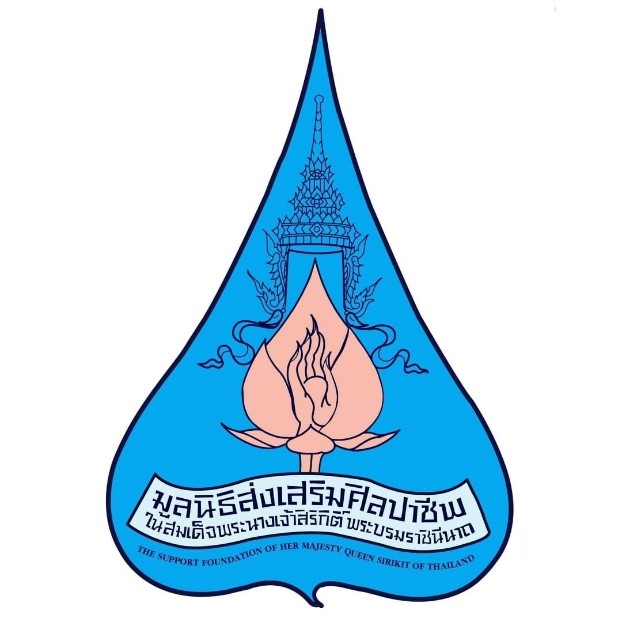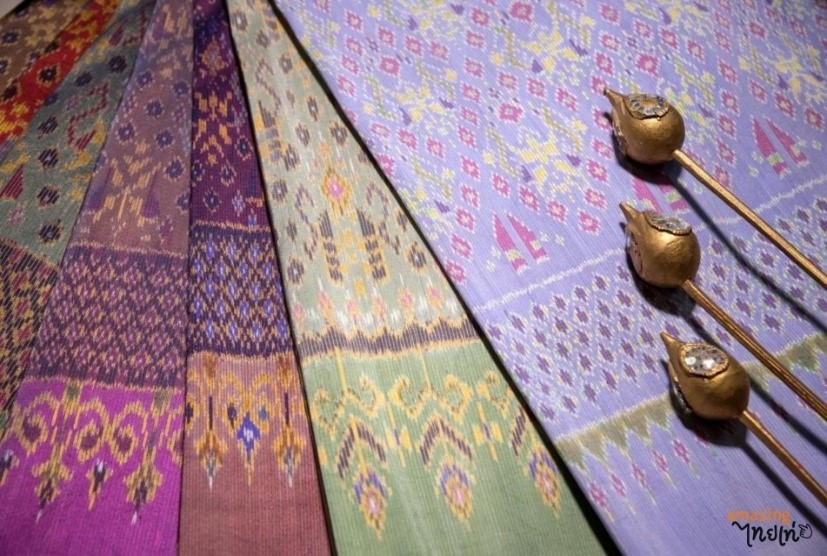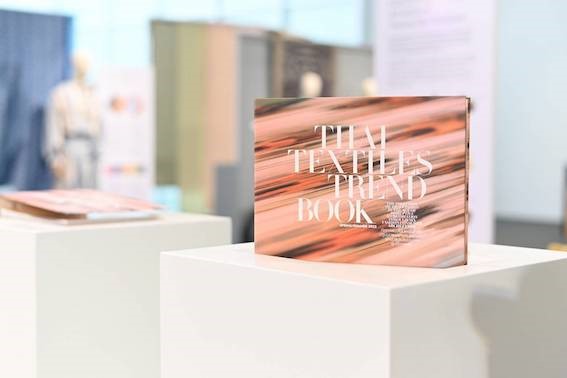Art of the Loom: the Future of Sustainable Fashion
Art of the Loom: the Future of Sustainable Fashion
วันที่นำเข้าข้อมูล 9 ส.ค. 2565
Art of the Loom: the Future of Sustainable Fashion
Dr. Vilawan Mangklatanakul
How many times do you wear a piece of clothing before throwing it away?
A study of 2,000 women by the British charity Barnado’s reveals that one piece of clothing is worn an average of seven times before being thrown out. Fast fashion has made it possible for one to constantly change their looks on the cheap. The Instagram culture is fueling the drive to buy new clothes often. Outfits that “no longer spark joy” can be easily discarded. But this “out of sight, out of mind” mentality is quickly inundating landfills across the world with unloved garments.
The fashion industry accounts for about 10% of global carbon emissions and 20% of wastewater. This should not come as a surprise as synthetic textiles are the mainstay of the fast fashion industry. Fabric like polyester and spun from plastic threads, break down into microplastics which get into the soil and water, ultimately entering the food chain. In fact, microplastics have become a leading marine pollutant. Even if countries have good marine debris and wastewater management, microplastics from synthetic fibers in the laundry could still threaten the well-being of life below water.
As a contrast and a blessing in fact, natural yarn used in Thai silk and cotton garments are biodegradable and therefore do not break down into microplastics.
Thai consumers are equally addicted to fast fashion. But there is hope on the horizon because a growing number of fashion-loving Thais are choosing homegrown designers who make clothes out of traditional Thai textiles.
For environmentally and socially conscious customers, Thai handloom fabrics are a part of the answer. Traditional Thai fabrics are spun from silk, cotton or hemp. Moreover, they are ethically made and help develop communities. In Thailand, handlooms are strongly grounded in local villages and organized around women-led initiatives. In fact, they empower women to be the decision makers and breadwinners for their families. Income generated by these enterprises goes back directly to improving the education and healthcare of community members.

Ban Hat Siew in Sukhothai province, Northern Thailand: a Tai Phuan woman meticulously patterning a “Pha Sinh Teen Chok,” a kind of sarong for ceremonial use. Credit: takemetour website: https://www.takemetour.com/amazing-thailand-go-local/thai-textiles-weaving-groups-villages/

Ban Phon in Kalasin province, Northeastern Thailand: a Phu Tai woman weaving Phrae Wa silk in Kalasin. Credit: takemetour website https://www.takemetour.com/amazing-thailand-go-local/thai-textiles-weaving-groups-villages/
The making of artisanal Thai fabrics is also closely associated with nature. For silks, villagers grow mulberry trees and harvest the leaves for feeding silkworms. Leftover waste from growing the silkworms then becomes good quality fertilizer. In contrast to chemical dyes, colors derived from natural sources such as indigo for blue, ebony seeds for grey and black, lac for red, are non-toxic, so they can be discarded without causing harmful pollution. Old traditional techniques therefore, continue to prove better for both the planet and the people.
However, Thailand’s traditional textile industry might have not seen the light, save for one woman and her powerful vision.
While accompanying His Majesty the Late King Bhumibol the Great on his many trips to distant villages in Thailand, Her Majesty Queen Sirikit the Queen Mother would receive many gifts of traditional hand-woven fabric from the local women.
The intricate and meticulous designs made a lasting impression on the Queen, whose appreciation for the art of the loom became well known, and wherever she went, villagers would come and present their creations. She inquired them about each piece, paying ample attention to each of their stories.
Her Majesty grew concerned to hear that this traditional Thai art form was in danger of disappearing. Farmers were more interested in sending their children to cities for better opportunities. Handloom was a skill and knowledge passed from one generation to the next.
What if these women were to organize themselves around a cottage industry to weave in between crop growing seasons as a way to supplement their families’ income? It could be a way to save this cultural heritage from dying out, while supporting rural community employment in the process.
Her Majesty Queen Sirikit launched the SUPPORT Foundation to institutionalize the royal initiative to develop the cottage craft industries around the country. By providing an outlet for their products to reach the market, the SUPPORT Foundation played a crucial role in making sure the villagers actually had alternative means of income besides farming. As a result, a number of them started to develop the business of handloom fabrics in earnest.

The SUPPORT Foundation of Her Majesty Queen Sirikit of Thailand Credit: Facebook page of the SUPPORT Foundation
Meanwhile, Her Majesty became the trendsetter of traditional Thai fashion. Her elegant outfits made from traditional fabrics from different regions of the country inspired city ladies to send Thai silk and cotton fabric to their dressmakers. She founded a fashionable movement that aroused a sense of pride in the nation’s cultural heritage. In turn, the demand for traditional Thai fabrics transformed small household looms into commercially viable enterprises. Later government policies such as One Tambon One Product (OTOP) would formalize state support for micro enterprises involved in traditional arts and crafts, featuring handlooms as a major product.
Such is the story of Baan Hua Fai, a village in the Khon Kaen Province in the Isan region, or the northeast of Thailand. The celebrated local mudmee, or ikat, pattern of Thai silk was family wisdom passed on from mother to daughter, made for special occasions such as weddings or given as gifts. When Her Majesty the Queen Mother visited the region in 1983, she was very impressed with the unique artistry of Baan Hua Fai’s silk and invited them to send samples to Chitralada Palace. Soon thereafter, the villagers were granted royal patronage under the SUPPORT Foundation.


Examples of local mudmee from Baan Hua Fai Village. Credit: Tourism in Isan Website http://i-san.tourismthailand.org/6906/
Over the years, Baan Hua Fai has grown to be a village cooperative of almost 200 members, most of them women. Today, it has become a model OTOP enterprise that welcomes visitors and serves as a learning and collaborative center for design and production techniques. Younger generations are adopting new business models according to changing tastes and the marketing environment. They sell products online via Facebook and Instagram, and collaborate with Thailand’s top designers.
The next phase in the growth trajectory of traditional Thai fashion is for it to truly “go global”. In the footsteps of her grandmother, Her Royal Highness Princess Sirivannavari Nariratana spearheaded the creation of the Thai Textiles Trend Book. As the Editor in Chief, Princess Sirivannavari oversaw the compilation of “Thai tones” as well as patterns and material that would make traditional Thai textiles marketable beyond Thailand. Made available for free in both print and electronic version on the Ministry of Culture website, the Trend Book offers ready references for weavers, designers, students and anyone developing new ideas for Thai textiles.

Book launch event: “Thai Textiles Trend Book SS 2022” Credit: Hommes Thailand website https://hommesthailand.com/2020/12/thai-textiles-trend-book-ss-2022/
Besides drawing upon Her Majesty The Queen Mother’s legacy for inspiration, Princess Sirivannavari’s envisions sustainability to be interwoven with traditional Thai craftsmanship and local wisdom. The use of natural pigments, fibers and low carbon production techniques corresponds to the Bio-Circular-Green Economy Model of sustainable consumption and production that the Thai government is promoting. Thailand’s village handloom enterprises also represent success stories in achieving the United Nations Sustainable Development Goals (SDGs). These include SDG 1 (No Poverty), SDG 5 (Gender Equality), SDG 8 (Decent Work and Economic Growth) and SDG 12 (Responsible Consumption and Production), among others.
The story of Thailand’s sustainable fashion industry gives us an important lesson – that we can look back into our past to find answers for the future. For Thailand, the Royal Family has been instrumental in preserving traditional knowledge and local wisdom, which have shown the way for our people to live in balance with the natural environment for centuries. That is why the concept of sustainability finds a ready audience in Thailand. It is almost innate in the real Thai way of life.
* * * * *
 |
Dr. Vilawan Mangklatanakul, Deputy Permanent Secretary for Foreign Affairs of Thailand, a career diplomat since 1995, has built her expertise in Thailand’s foreign policy and international law, having served as the Director of the Office of Policy and Planning, the Director-General of the Department of International Economic Affairs, and Director General of the Department of Treaties and Legal Affairs. In November 2021, the 76th session of the United Nations General Assembly elected Dr. Vilawan to serve as one of the 34 members of the International Law Commission (ILC) for the term 2023 – 2027. She is Thailand’s first and only woman candidate from the Asia-Pacific Group, and the first woman international lawyer from ASEAN to be elected to such a position. During her campaign for the ILC, Dr. Vilawan advocated for women’s empowerment and for communities to be better prepared for future challenges. |
Royal Thai Embassy in New Delhi
เวลาทำการ : จันทร์-ศุกร์ 09:00 - 17:00 น. (ยกเว้นวันหยุดราชการ)
หมายเลขฉุกเฉินสำหรับชาวไทย +๙๑ ๙๕๙๙๓ ๒๑๔๘๔ (สถานเอกอัครราชทูตฯ ขอสงวนสิทธิไม่ตอบคำถามเกี่ยวกับประเด็นที่ไม่ใช่เรื่องฉุกเฉินที่เกี่ยวข้องกับสวัสดิภาพของคนไทย อาทิ วีซ่า ทางหมายเลขโทรศัพท์ฉุกเฉิน)